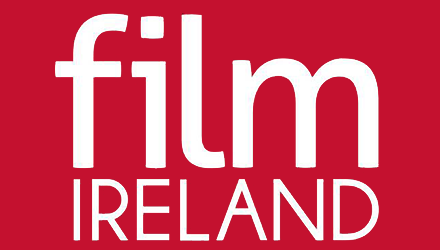Richard Drumm entered the dark to check out new Irish horror film From the Dark, which screened at the Jameson Dublin International Film Festival.
Horror, more than almost any other genre, can be the most infuriating one to be a fan of. Disappointment is constant, frustration is frequent and on those rare occasions when something does emerge that feels fresh and genre-altering, it will so quickly be imitated to death as to render its initial achievement more curse than blessing (a fate, I fear, that will befall The Babadook before long). From the Dark then, probably falls somewhere into the ‘frustrating’ category. That said, a frustrating horror is still infinitely better than a boring one.
Sarah (Niamh Algar) and Mark (Stephen Cromwell) are driving through rural Ireland en route to a country getaway. In the long-established traditions of the genre; at least one of them isn’t from the country and engages in some small transgression against the locals, their map/iPhone will eventually fail them and they’ll get lost, there will be bickering and in case you’re wondering, there is of course some almost laughable Chekhov’s Gun-ing involving the subject of engagement. Unknown to them, a local farmer has just unwittingly released a long-buried creature from a nearby bog. As night descends and their car gets stuck, the couple make their way towards an (altogether now) isolated, ramshackle farmhouse to seek help only to realise they’ve become the prey to some unknown, very literal hunter of the night.
The setup being as by-the-numbers as it is, isn’t necessarily an issue. In fact, one of the great strengths of the script is how genre-aware it is but more importantly how genre-aware it knows its audience is. At no point do either of the leads have a conversation about vampires. Nor at any point do we need some shoe-horned-in dialogue to explain that Sarah has had survival training in order to know how to tie a bandage or light a torch, etc. These are all just refreshingly taken as given. On top of this, the central gimmick of the two leads trying to cobble together any viable light source they can in order to keep Nos-faux-ratu at bay is both fun to watch and consistently inventive. And there is a genuine attempt to shake up the visuals a bit by occasionally showing events from the creature’s Buffalo-Bill-o-vision. Ultimately though, the greatest threat in the film is its running time.
After seeing this film, I couldn’t help shaking the feeling that there’s an extremely solid, tight, forty-five minute shorter film in here somewhere. And while that might sound a little harsh, there’s no denying that the film could definitely stand to lose about twenty minutes. The problem is that once Sarah has fulfilled her genre-destined fate and become the Final Girl, the momentum of the story should push things into a final battle and resolution. Unfortunately, events continue on past the point of being tense to where you just want it to end and don’t really care who wins. There’s really only so many times you can pull the trick of the heroine realising how to beat the creature, trying it, it failing and then another breathless chase scene starting up. This is to say nothing of the fun but practically farcical series of events in the house itself.
This running time issue might not have been so apparent if the film hadn’t chosen to go in a rather bold direction in its second half. You see, given that there are only four characters in the movie, from a certain point onwards we’re essentially watching Sarah on her own, which means there’s practically no dialogue past the midpoint. Now, while this doesn’t entirely work it is a very interesting gambit to pull and pays dividends in certain sequences, most notably in the payoff to the previously mentioned engagement set-up. This could have been reduced to trite, uninspired dialogue but instead plays out wordlessly through silhouettes (and in a further, more overtly symbolic scene involving a chisel), which is without doubt the strongest scene in the movie and one of those moments of pure cinema that are all too rare these days.
Additional praise has to go to Michael Lavelle’s cinematography which succeeds in finding the right balance between having dark be dark enough to remain threatening while being light enough that you can still see what’s going on. And it would be quite difficult to discuss this film without heaping praise on Niamh Algar’s central performance as Sarah. Entirely believable from start to finish, she manages to imbue Sarah with a real credibility and humanity without lapsing into over-dramatics (or turning her into some kind of stock, post-Buffy, impossible-badass cliché). A feat made all the more remarkable by the fact that she achieves most of this without dialogue. It’s an admirably judged and impressively under-stated performance which largely carries the film.
It’s not fair to claim that the film fails to reinvent the horror wheel because it’s not trying to. From the Dark is a perfectly solid little horror movie that will likely enjoy a decent life on the VOD circuit and, with any luck, a run at the Irish box-office. This is the exact kind of movie this country needs more of; well-crafted, simple, low-budget genre pieces that actually have a chance of making some money at the box-office. It might not carry too many surprises for anyone well-versed in the genre but the clear enthusiasm everyone involved had for the project is up there onscreen plus there are some fun ideas and scenes sprinkled throughout. And that’s definitely preferable to yet another sequel, prequel or reboot to a known horror brand.





